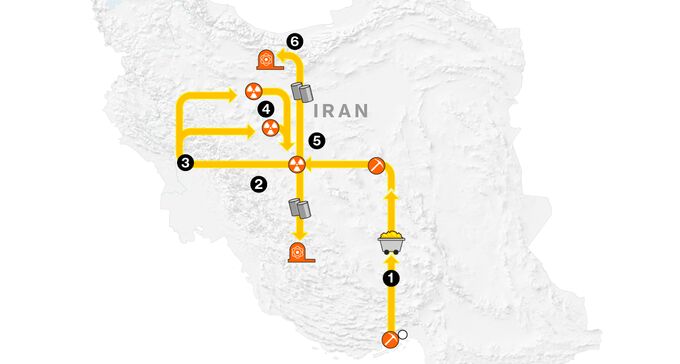WASHINGTON, D.C. – As tensions escalate between the United States and Iran, recent satellite imagery reveals the complexity of dismantling Iran’s nuclear capabilities, highlighting that time, not just military might, is crucial.
Breaking: Satellite Images Reveal Limited Damage
Satellite images have unveiled the challenges faced by the U.S. and Israel in their attempts to neutralize Iran’s nuclear sites. Over four days of bombardment, Iran’s central enrichment facility in Natanz, located 300 kilometers south of Tehran, suffered limited damage. The attacks primarily affected electricity switch yards and transformers, which experts assert can be repaired within months.
“They did damage but left a lot intact,” said Robert Kelley, a former inspector at the International Atomic Energy Agency (IAEA).
Immediate Impact: Decision Time for U.S. and Israel
The images analyzed by Kelley and provided by Planet Labs PBC underscore the significant decisions facing U.S. military planners. As President Donald Trump deliberates on whether to engage militarily with Iran, Israel continues its assault on Iranian nuclear sites.
Key Details Emerge: Iran’s Nuclear Infrastructure
Iran’s nuclear ambitions are deeply embedded within a fortified infrastructure spread across the nation. With thousands of scientists and engineers working at various sites, the country’s near bomb-grade uranium stockpiles present a moving target, complicating efforts to track and neutralize them.
Uranium Moves to Multiple Sites Around Iran, and its current unknown location has experts on edge.
Industry Response: IAEA’s Challenges
The United Nations nuclear watchdog, the IAEA, has faced significant obstacles in tracking Iran’s highly-enriched uranium stockpile due to ongoing military actions. Despite conducting nearly 500 inspections last year, inspectors have been sidelined since Israel’s bombing campaign began.
By the Numbers: IAEA Inspections
- Nearly 500 nuclear inspections conducted last year
- IAEA monitors remain in Tehran
- 409-kilogram stockpile of highly-enriched uranium
What Comes Next: Potential U.S. Involvement
The prospect of U.S. involvement looms as discussions continue over the use of Massive Ordnance Penetrators to target Iran’s heavily fortified sites, such as Fordow. This would necessitate direct American military engagement, a significant escalation in the conflict.
Background Context: Iran’s Nuclear Program
Iran’s nuclear program, initiated during its war with Iraq in the 1980s, has evolved into a sophisticated network designed to withstand external threats. Despite the cessation of its weapons program in 2003, Iran’s nuclear infrastructure remains a focal point of geopolitical tension.
Expert Analysis: Strategic Considerations
Experts like Kelley emphasize the resilience of Iran’s nuclear infrastructure, noting that repairs to damaged facilities can be completed swiftly. The strategic design of these sites, with backup power and reinforced structures, poses a formidable challenge to any military intervention.
“Any competent designer will have backup power, either batteries or generators,” Kelley stated, highlighting the robustness of Iran’s defenses.
Regional Implications: The Broader Middle East Conflict
The ongoing conflict between Israel and Iran, with potential U.S. involvement, threatens to destabilize the broader Middle East region. The strategic calculations and military actions taken in the coming weeks will have far-reaching implications for regional security.
Timeline of Events: Recent Developments
- June 13: Israel begins bombing campaign
- June 15: IAEA reports critical damage at Isfahan
- June 17: New satellite imagery analyzed
- June 18: IAEA Director General expresses concerns
The unfolding situation necessitates a careful balance of diplomacy and military strategy, as stakeholders navigate the complexities of Iran’s nuclear ambitions and the geopolitical landscape.
